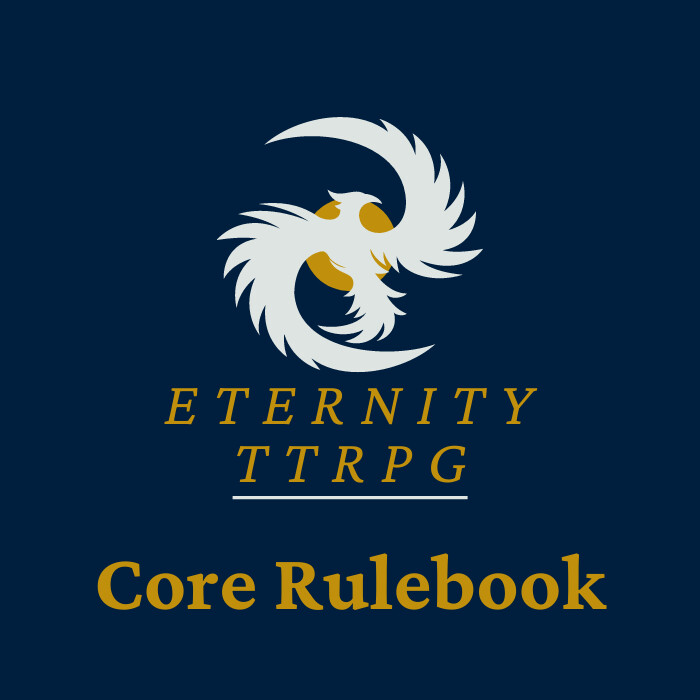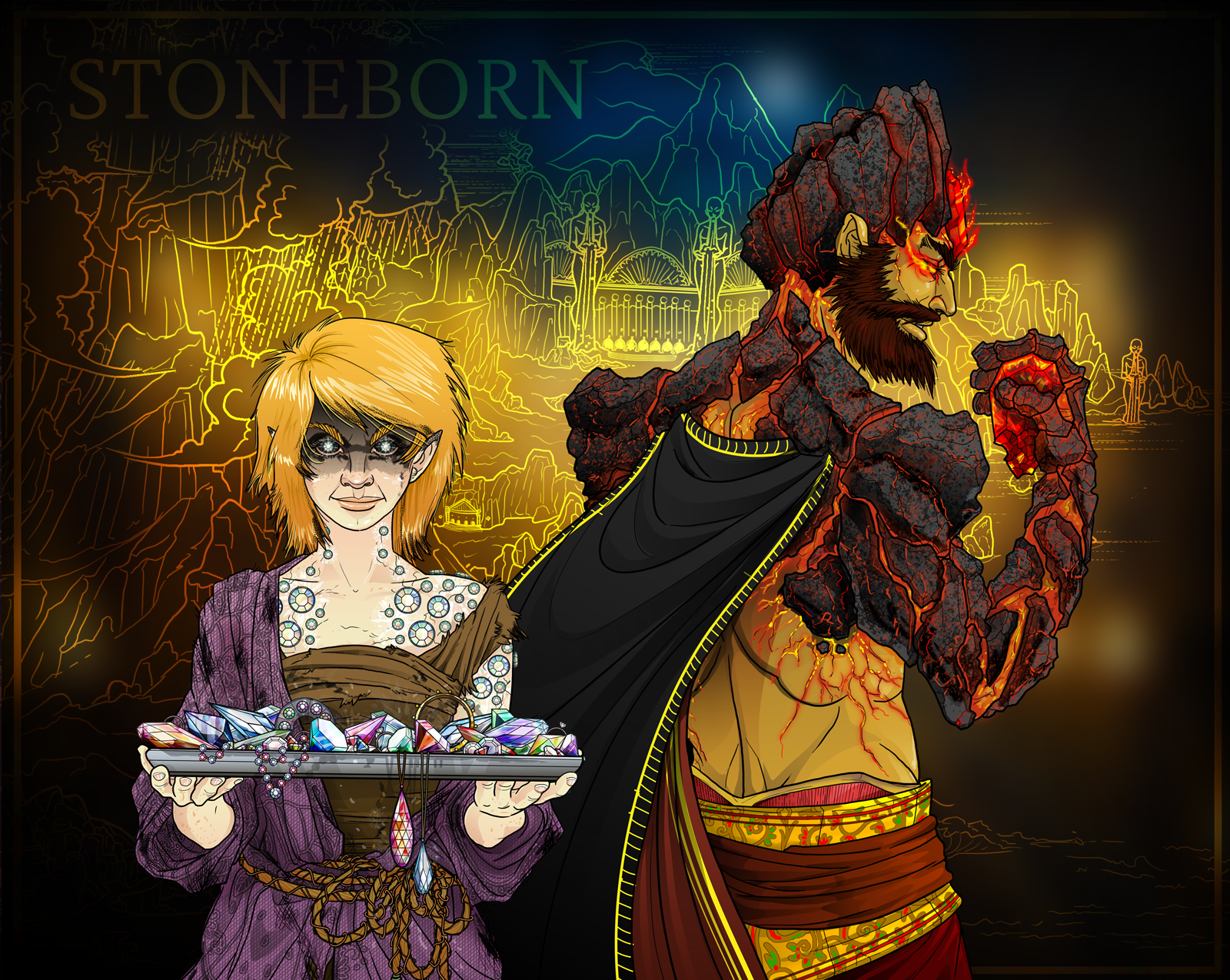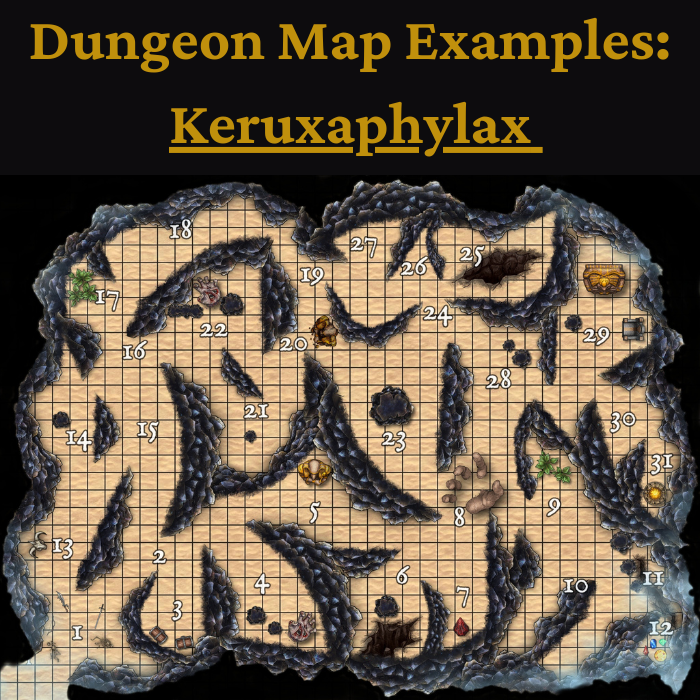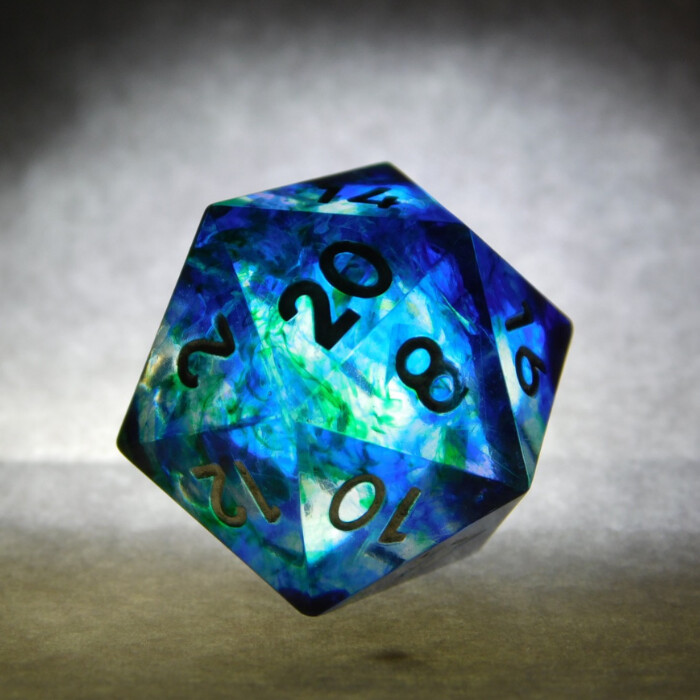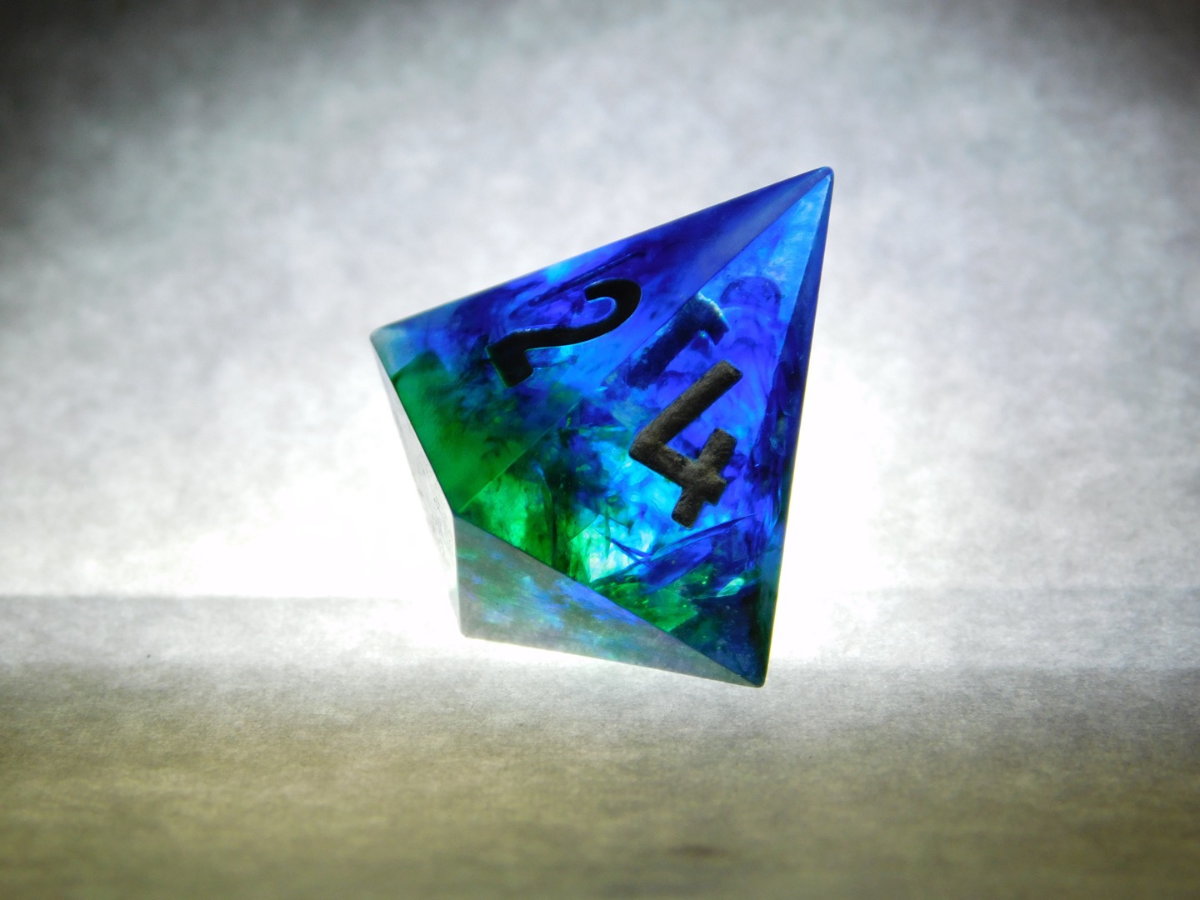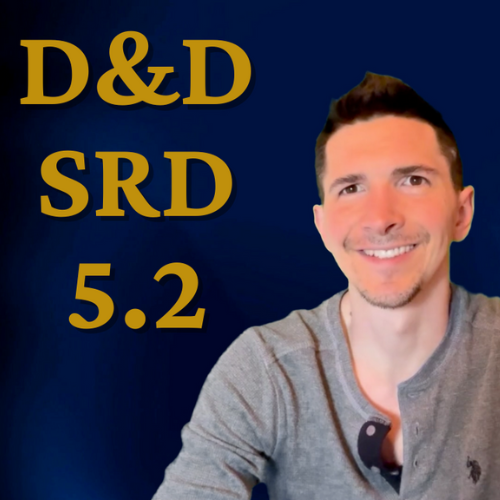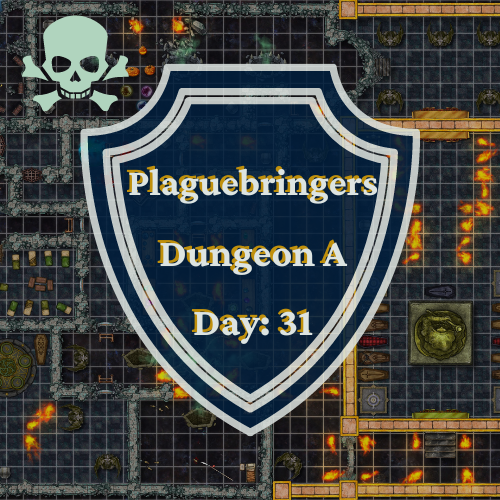Extraordinary Single Player DnD in 7 Steps
Single player DnD is a great way to spend part of an evening or get in some gaming if your regular group hasn’t met up for a while. It's also very easy to do, and can be extremely fun.
I’ve always enjoyed playing tabletop RPGs by myself. Adventures usually last about 1 hour at a time when I do single player DnD, and they’re always rewarding.
Single player DnD doesn’t have to be hard. Technically, DnD is set up to be played with a group – according to the core rulebooks (Dungeon Master, plus players). However, single player DnD is a lot simpler than it might seem.
First, you have a couple options. There are in fact tabletop roleplay games that have single player options in the core rules, like Eternity TTRPG. If you choose to play Eternity, or a game like it, you’re set – no need to read further as all the work is done for you.
However, if you do want to specifically play single player DnD, here’s info and resources to get started:
- Character Creation
- Main Story Elements
- Scenes of Play
- Finishing a Scene
- Single Player DnD Modules
- Random Generators
- Maps, Minis, and Music
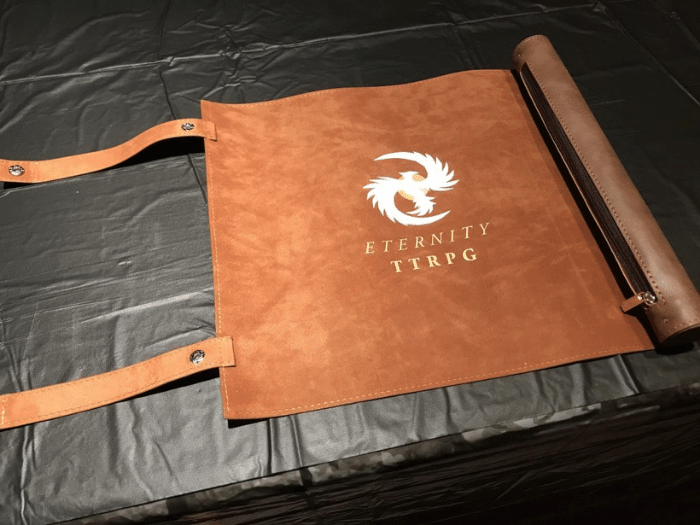
1. Character Creation
Normally, character creation takes place among a group of people who all have ideas for what they want to play. You also have the advantage of a dungeon master who explains some of what the RPG campaign world is about. These influences of course make it easier to decide on your character as they give you context for the game.
In single player DnD, you don’t have those advantages. You create your character (and game) without outside context. This can be a little weird if you’re not used to it, but is in fact liberating.
My advice is to build the character you’ve always wanted to play. Don’t worry about setting, context, the gaming world, or even genre. Just come up with your character’s stats, and a very basic idea of who they are, as a person.
It’s also worth noting that in single player DnD, your individual character also doesn’t have all the options that a normal DnD group might have, when it comes to your class. As you probably know, a “well-rounded” DnD group normally has a strong fighter-type character, a healer, a spell-caster of some kind, and a rogue to be stealthy and disarm traps.
It’s no big deal that you (probably) won’t have all that; it just takes a little consideration.
Personally, my favorite option is not to worry about my character’s lack of a party or lack of well-rounded options, and just have fun playing the race and class I want. I recommend you do the same as it’s easier to manage for single player DnD, and makes for a more satisfying game.
Let your creativity and problem-solving round out your character’s abilities for you, in place of a full party.
However, if you are really set on the idea of having a character that has more options available to them, try out one of the following (multiclass your character or create an adventuring party - below).
Eternity TTRPG Top Sellers
Multiclass Your Character
Have your character multi-class so they gain a wider breadth of abilities. This allows your character to be decent in melee combat, have a few spells they can cast, and be stealthy.
The tradeoff is that your character won’t become exceptional at any one thing, even with time, so it’s not necessarily the perfect choice, either.
Create an Adventuring Party
You may consider giving your character an adventuring party of their own. This fills in gaps that your main character will miss, individually.
The problem is that creating multiple characters – and tracking them – is kind of a pain. Plus, then you’re really playing an entire party, not just one character, which makes single player DnD a bit more complex.
I will say though that I have tried this option on a couple occasions. I played a single player DnD campaign where I “roleplayed” one character and simply had a couple other characters in the background. I created their stats, but not their personalities so much (and didn’t worry about roleplaying them), and that did work pretty well.
It can be fun having an entire DnD party all to yourself. Kind of like playing older Final Fantasy games where you have an entire group you control. If you like the idea, I recommend you try it out.
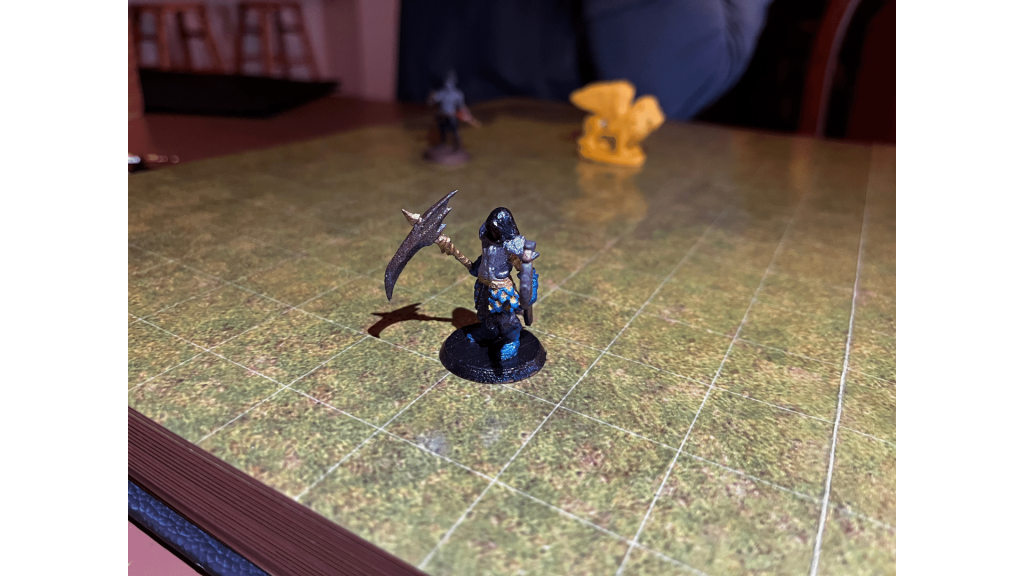
2. Main Story Elements
When playing single player DnD, you need to decide what the game is going to be “about.” In a normal DnD campaign, this is something that gets answered for you by your dungeon master. Playing solo, this is something you’ll have to decide for yourself.
To get started, you do not need to create an in-depth world with a massive storyline like you may have seen some DMs do in the past. It’s simply not necessary.
Instead, create a single piece of the world. No depth is needed at this point. A simple name or concept will do. Write down the name or concept of that main story element in a notebook you’ll use for your game.
Your main story elements can be one of the following things. It’s perfectly fine to just start with one of these. If inspiration strikes you, however, feel free to write down a couple ideas:
- Event: something substantial that’s currently happening in the world, or has happened in its past.
- Item: some item or trinket unique, of your own creation. This doesn’t have to be an item already in DnD. There are no limits to this item’s power or the way it functions.
- NPC: non-playable character. Someone influential or meaningful to the world, or to a story you have in mind. This can also be a villain.
- Organization/ Nation: societies, countries, guilds, coalitions, etc.
- Town/ Zone: places friendly or unfriendly. Locations, geographical features, etc.
Note that your main story element(s) can be directly related to your character (his or her hometown, family member, or rival).
They can be something he or she wants to obtain, or attain. Or, they can be completely separate.
At some point you will connect your character into your element, but you don’t have to have all that figured out just yet.
Inspiration for Your Story Element
If you’ve never done anything like this before it may be a little difficult to come up with ideas. My recommendation is to think about your favorite movies and books.
Re-create events, items, NPCs, organizations, nations, or towns from those stories. Put them in your game. You’ll be able explore your favorite fictional places in your own way, with your own character.
If you need more ideas, use one of two of these ideas from my gaming group. Note that in most cases the players who created these story elements didn’t know much, or anything at all (except for the name), about the story elements when they initially wrote them down:
- 4th Princess of Demons (NPC)
- Arelexius the Indisposable (NPC)
- Basilisk Hunters (Organization)
- Broger the Giant (NPC)
- Curing an Ancient Plague (Event)
- Evizenium (Town)
- Harbinging – Rampage of the Arbiter (Event)
- Key to the Necropolis (Item)
- Killing Fields of the Seven (Zone)
- Staff of Ruin (Item)
- Tierfol the Accursed Kingdom (Nation)
- Tower of Eight Shrouds (Organization)
- War of 1,000 Roses (Event)
- Winds of Fate (Item)
- Valerian Isle (Town)
If you need more ideas to get your creativity rolling, check out this post on DnD quest ideas. Any of these prompts will help you create your first main story element.
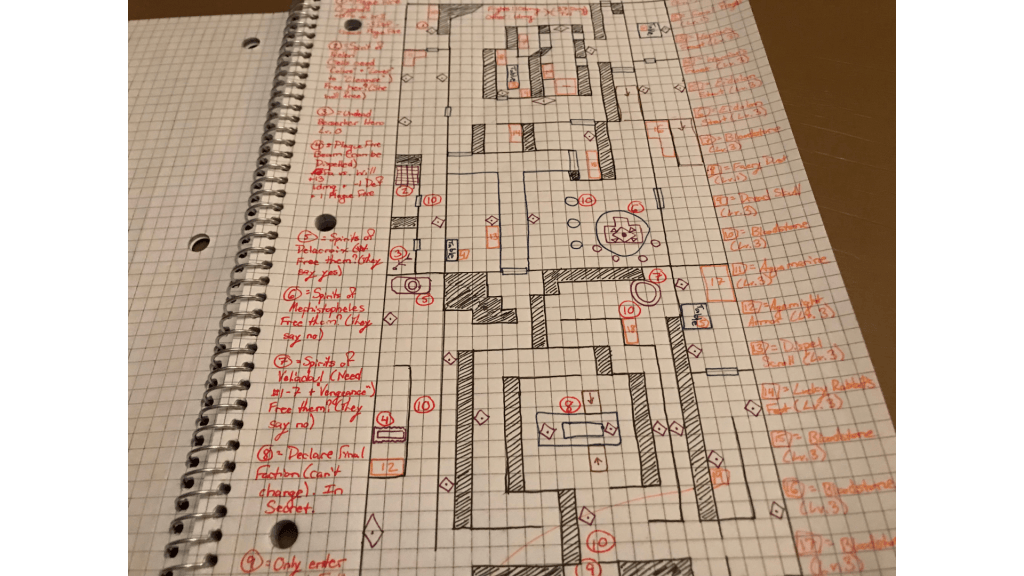
3. Scenes of Play
In scenes, you take the main story element(s) you’ve created, and explore them in more detail. You get to learn things like the story element’s history, its place in the storyline, connection to your character, and much more.
DnD sessions always take place in one setting or event at a time. Think about your single player DnD session as one “scene of play” at a time. This makes the “how to” of solo gaming very doable.
To play, break down your “scenes” into the following 5 steps:
- Main Focus & Time Lapse
- Scene Setting
- NPC’s
- Conflict
- Theater of the Mind Roleplay
1) Main Focus & Time Lapse
The main focus defines what the scene is “about” or what will generally happen during the scene. You can also decide if the scene takes place immediately following the previous scene, or if some time has passed.
What exactly is the Scene “about,” you ask? It’s about the main story element that you created. You’re going to explore that idea and give it additional substance.
2) Scene Setting
Imagine for yourself everything that your character sees, feels, smells, hears, or tastes. Where is your character? What time of day? What location? What’s the overall feel? What’s it like to “be” there?
Most importantly, connect the setting to your main story. How can you make that centralizing idea come alive through the setting?
3) NPCs
Are there NPC’s (non-playable, or “side” characters) in the scene? Who are they? What are they like? What are they doing? This can be a simple description, which will expand as the scene progresses.
After introducing characters, imagine for yourself anything they say or do. You may end up mentally “roleplaying” in more detail, in step 5 (below).
4) Conflict
Every adventure has conflict. Here’s where that takes place.
The scene’s conflict can be anything that directly relates to the scene’s main focus/ your main story element. Monsters, physical barriers, mental anguish, distance, time – anything. What is preventing your character from their goal?
For an initial Scene, the conflict may simply be something like “what is my character trying to accomplish in relation to my main story element?” Keep it simple. Go one step at a time in your scenes.
If it comes to it, combat can also count as the conflict for a scene. If you get into battle, I recommend that you either have a monster manual ready, or utilize a random encounter generator to make setting up the fight easier.
5) Theater of the Mind Roleplay
This is the final and most important step in your scene. Here, you decide how your character responds based on everything created in this scene so far.
You may also “roleplay” how other NPCs act and speak for the scene, as well as the outcome for the conflict, and any changes to the setting that take place.
For resolution of conflicts with outcomes that aren’t certain, use the DnD core rulebooks for skills, knowledge rolls, and combat.
A scene of play finishes you’ve mentally roleplayed what you want your character to do for that scene.
Scenes typically take anywhere from a single minute to a quarter of an hour, depending on the complexity of situation you set up. There’s no right or wrong amount of time it should take.
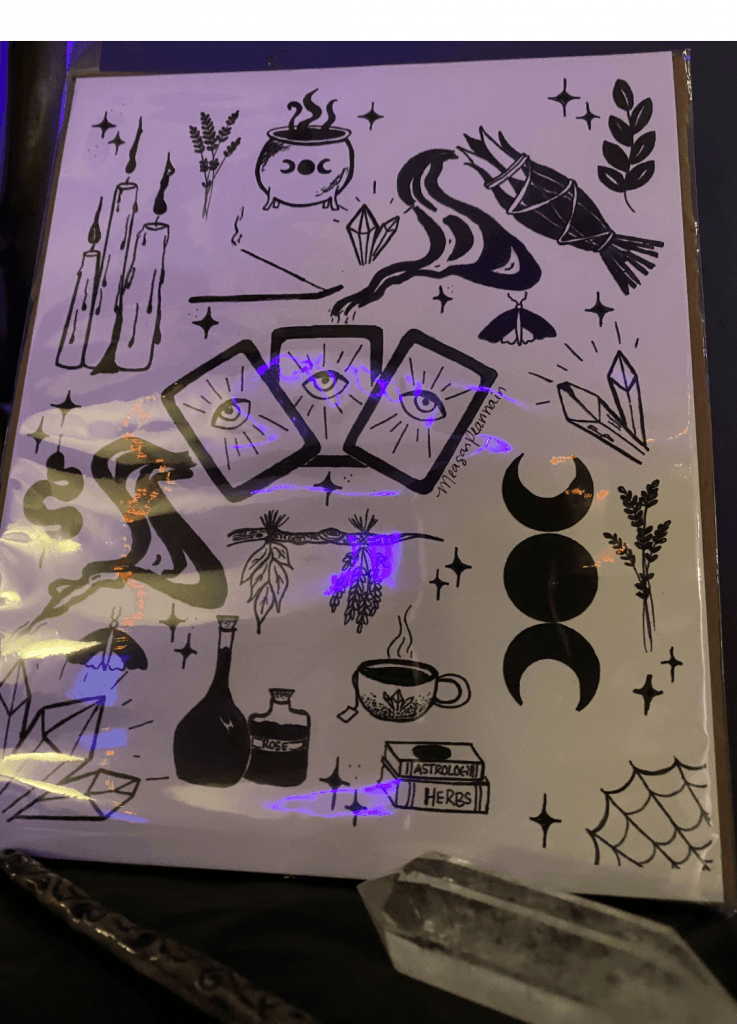
4. Finishing a Scene
Upon completing each scene, I recommend writing a sentence or two in your notebook to summarize the scene. That way, even if you only get to play for an hour or so each week, you’ll remember what happened last time you played. The consistency of this approach also allows you to build a complex and enjoyable ongoing story.
Once a scene is complete, go to the next scene. Your new scene is again “about” your main story element – only this time, you develop the concept further. Develop the idea one step beyond the conclusion of the scene, prior.
If you need help with how to do this, think about the 5 stages of dramatic structure used in all great stories. Make each new scene a mini version of the 5 stages of dramatic structure:
- Scene 1: Exposition of your main story element
- Scene 2: Rising Action of your main story element
- Scene 3: Climax of your main story element
- Scene 4: Falling Action
- Scene 5: Resolution/ Connection to Your next 5 Stage Cycle
Once complete, start the 5 stages of dramatic structure over, but add another layer to your main story element. Something that raises the drama, or the stakes involved. That way, your next 5 scenes through the dramatic structure are more in-depth than before.
Another approach is to create a new main story element, so that you have multiple. Play through 5+ scenes with that element, then go back to your original, or create a third story element. Over time, you can ever combine your story elements and see how their individual stories interweave, creating an incredible tapestry of interrelated dramas.
Rewards
With each scene finished in single player DnD, I give my character rewards (experience, money, items, treasures). Even if I didn’t kill a monster, loot a dungeon, or the like, I still give myself rewards after every scene.
This approach incentivizes you to create a great story.
How? It keeps the focus on your main story element(s), since you still get rewards for purely roleplay encounters and story building. Using this approach, you don’t feel compelled to make all of your scenes focused around slaying monsters.
How much reward should you give yourself?
I recommend giving your character the same rewards you’d get from slaying a monster equal to your current level, for every scene you complete, regardless of whether or not there was combat involved. Do that, and your character will level and scale in power at a very consistent and enjoyable pace.
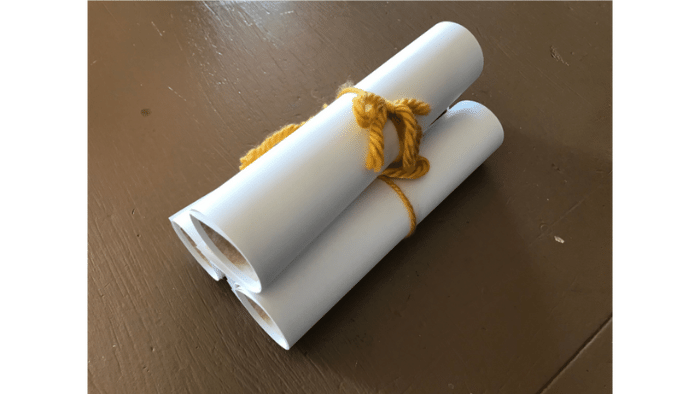
5. Single Player DnD Modules
There are single player DnD adventure modules available online. Some of these modules are written for 1 DM and 1 player. If you use the steps outlined above, you won’t have too much trouble, however, playing through them without a dedicated dungeon master.
Having an adventure module on-hand offloads some of the creative workload from you, so that you can focus on having fun. The starting material it provides also fuels your own creativity.
In either case, especially when you’re new to single player DnD, I recommend using a prepared module. They’re inexpensive, easy to set up, and get you into the flow of story creation.
6. Random Generators
I tend to view random generators in the same category as using adventure modules. They’re great for helping you get started. Just don’t rely on them too heavily. The reason is that you can get lost in other people’s ideas and never get into the meat and potatoes of your own story.
There are literally hundreds of random generators online specifically built for TTRPG play. We’re talking everything from random story generators to elf name generators. Random dungeon generators, item generators, encounter generators, and so much more.
My recommendation is to use random generators to help you create your main story element, or to occasionally inspire you for a setting, NPC, or basis of conflict in one of your scenes. Then, get back to your own game and creativity.
Random generators – of course – are terrible at creating a masterpiece. You can do that for yourself with a little practice and effort.
7. Maps, Minis, and Music
I wrote an entire section in my dungeon master tools article on maps, minis, and music for tabletop RPGs. You should check it out. Great artwork, battlemaps, minis, and dnd music makes your gaming experience more in-depth and enjoyable. They help you get into the fabled flow state, which is extremely important for high-quality gaming. Especially for single player DnD.
You don’t need a lot of battlemaps, minis, or music. Just a couple maps, a few minis, and a couple song selections.
Try Single Player Gaming for Yourself
The best way to find out if single player gaming is right for you is to get started. Set up and play for 30 minutes using the advice I outlined above. You’ll be able to tell pretty quickly if you enjoy it.
If you haven’t seen Eternity TTRPG yet and you’re interested in solo gaming, I highly recommend you check it out. Eternity TTRPG can easily be played as a single player, and provides an immense amount of resources to make the game both exciting and simple.
The most important thing to remember is that you get out what you put in. Give it some real effort, put on your best creative thinking face, and have fun. You’ll be glad you did.

